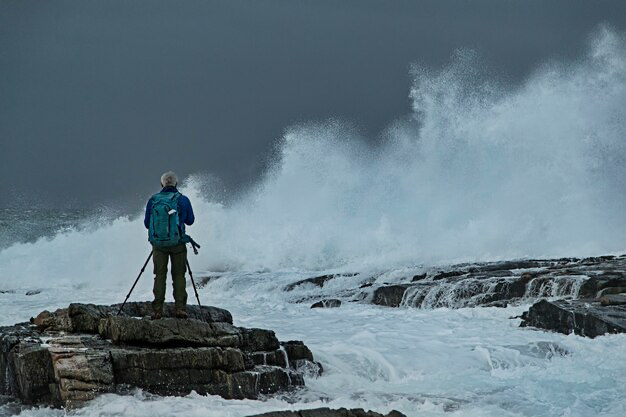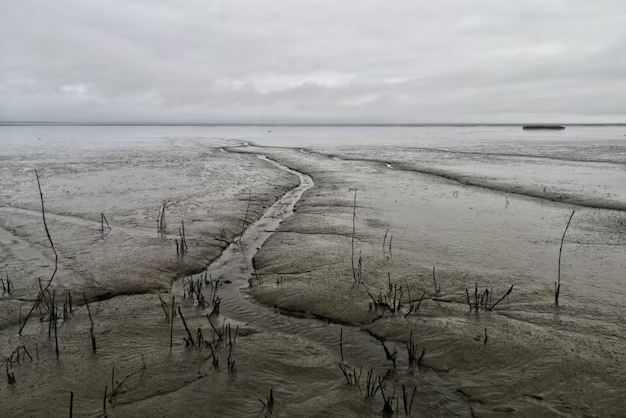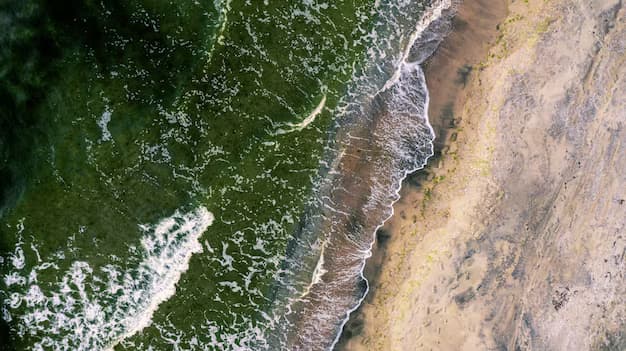The ebb and flow of the ocean’s tides represent a dynamic force that shapes our coastal environments and influences marine life. Understanding the differences between high tide and low tide is essential for comprehending the intricate workings of our planet’s interconnected systems. In this comprehensive exploration, we will delve into the fundamental disparities between high and low tides, examining their causes, effects on local ecology, and the overall characteristics of these oceanic movements.
Main Differences Between High Tide vs Low Tide
The tidal phenomena of high and low tides play a pivotal role in shaping coastal ecosystems and influencing human activities. These natural occurrences are driven by a complex interplay of gravitational forces and celestial mechanics, resulting in distinct patterns of water movement along coastlines. Let’s unravel the key disparities between high tide and low tide to gain a deeper understanding of their significance.
High Tide

High tides signify a period when coastal waters reach their maximum level, inundating intertidal zones and reshaping the landscape of shorelines. The occurrence of high tides is influenced by various factors, including the position of the moon, the sun, and the Earth’s rotation. Understanding the underlying causes and characteristics of high tides is crucial for comprehending their impact on coastal environments and marine habitats.
What Causes High Tide?
High tides are primarily caused by the gravitational pull exerted by the moon and, to a lesser extent, the sun on the Earth’s oceans. The gravitational attraction between the moon and the Earth leads to the formation of two tidal bulges—one facing the moon and the other on the opposite side of the Earth. As the Earth rotates within this gravitational field, coastal areas experience periodic increases in water levels, resulting in high tides.
In addition to gravitational forces, the alignment of the moon in its lunar cycle also influences the occurrence of high tides. When the moon is closest to the Earth or positioned on the opposite side of the Earth, it exerts a stronger gravitational pull, contributing to higher water levels along coastlines.
The Characteristics of High Tide
- Water Level: High tides result in a significant rise in water levels along coastal regions, leading to the inundation of intertidal zones and the submergence of shoreline features;
- Timing Of High Tide: Most coastal areas experience two high tides per day, occurring approximately 12 hours and 25 minutes apart, due to the combined influence of lunar and solar gravitational forces;
- Tidal Range: The difference in water level between high tide and the subsequent low tide, known as the tidal range, varies depending on geographical location and local topography;
- Wave Action: The increased water volume during high tides generates more powerful waves, impacting coastal erosion, sediment transport, and nearshore ecosystems;
- Relation To The Moon: High tides occur in areas where the moon’s gravitational pull is most pronounced, leading to elevated water levels and dynamic changes in coastal landscapes.
Low Tide

Low tides mark the phase when coastal waters recede, revealing expansive stretches of intertidal zones and exposing diverse marine habitats. The transition from high tide to low tide is characterized by a gradual reduction in water levels, unveiling hidden ecosystems and creating opportunities for various intertidal organisms to thrive.
What Causes Low Tide?
The occurrence of low tides is intricately linked to the gravitational interactions between the moon, the sun, and the Earth. As the moon orbits the Earth and exerts its gravitational influence, it creates alternating bulges of water, resulting in the rhythmic rise and fall of coastal tides. During periods of low tide, the gravitational forces exerted by the moon and the sun produce a decrease in water levels, uncovering extensive intertidal areas and shaping coastal landscapes.
The Characteristics of Low Tide
- Water Level: Low tides lead to a substantial decrease in water levels along coastlines, exposing vast expanses of intertidal habitats and revealing intricate ecosystems that are otherwise submerged during high tide;
- Timing Of Low Tide: Similar to high tides, most coastal regions experience two low tides per day, occurring approximately 12 hours and 25 minutes apart, as a result of the gravitational interplay between celestial bodies;
- Tidal Range: The difference in water level between low tide and the subsequent high tide, known as the tidal range, varies across different geographical locations, influencing the extent of exposed intertidal areas and the diversity of marine life;
- Coastal Regions: Low tides expose larger areas of coastal regions, unveiling diverse habitats and providing opportunities for scientific exploration, recreational activities, and ecological conservation efforts;
- Relation To The Moon: Low tides occur in areas parallel to the moon, where the gravitational pull results in diminished water levels, creating unique ecological niches and fostering biodiversity within intertidal ecosystems.
Conclusion
In conclusion, the differences between high tide and low tide encompass a myriad of intricate mechanisms and environmental impacts that shape coastal landscapes and influence marine ecosystems. By unraveling the underlying causes, characteristics, and ecological implications of these tidal phenomena, we can gain a deeper appreciation for the dynamic forces that govern our planet’s interconnected systems. From the gravitational dance between celestial bodies to the profound influence on coastal ecology, high and low tides exemplify the ceaseless rhythm of nature and the profound influence of oceanic dynamics on our world. Understanding these disparities is not only essential for scientific inquiry but also for fostering a greater awareness of the delicate balance that sustains our coastal environments and the diverse life forms they support.



